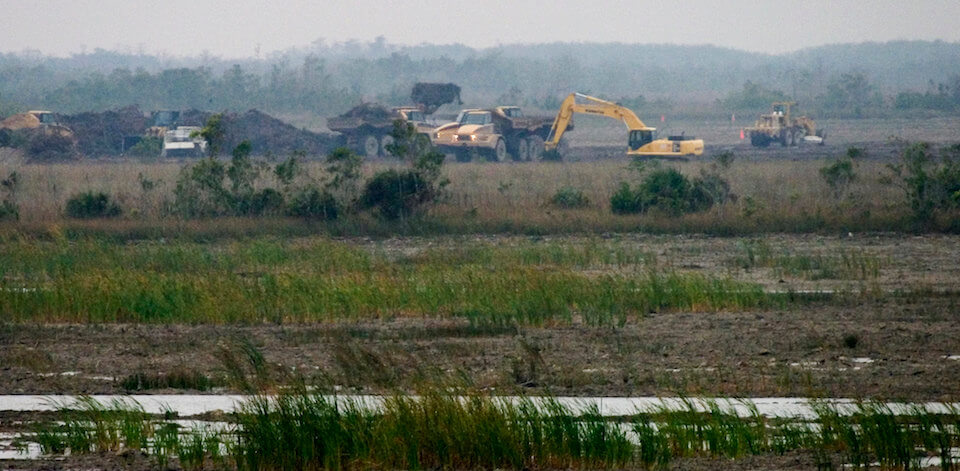- Habitat Loss
Habitat Loss, Fragmentation, and Degradation

Habitat loss, fragmentation, and degradation are the most pervasive threats to biodiversity with human caused habitat fragmentation the greatest threat to species. Habitat loss has been identified as the most significant challenge Florida’s biodiversity has faced over the past century. These threats are expected to continue as human populations are predicted to continue to increase and lead to additional land use changes.
Fragmented habitats and human land uses will hinder movement of species, further reducing their ability to shift their distributions in response to climate change. The ability of plant and animal species to retreat in response to rising waters (both sea level rise and flood events) will be affected by barriers preventing their retreat, including human-made structures, such as buildings, bulkheads, roadways, and other obstructions. Additionally, manmade ecosystem alterations, either those already existing or those put in place in response to effects from climate change, may lead to increased habitat loss, degradation, and fragmentation. For example, the use of hardened shoreline stabilization measures coupled with more intense storms could lead barrier islands (and their habitats) to fragment and disappear.
The effects of roads as barriers altering natural hydrology will be exacerbated by changes in the amount of precipitation and large storm events. If precipitation patterns shift to fewer rainfall events but with larger amounts of rainfall, existing transportation infrastructure, such as bridges and culverts, may not be sufficient to accommodate the increased flow.
What's next?
Learn about interactions between climate change and invasive species in Florida.